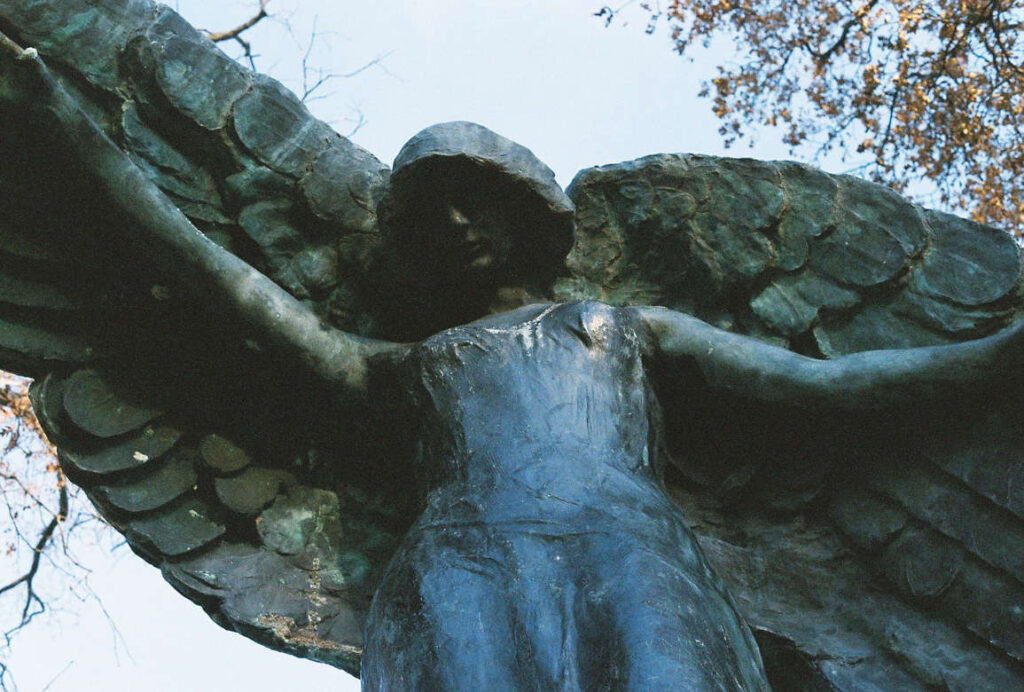

The Black Angel
The Black Angel is a foreboding presence in Oakland Cemetery: a nearly-nine-foot-tall figure on a four-foot monument with outstretched wings and arms, a downturned face and helmet hair. Vandals have lopped off most of her fingers, an act that, according to legend, leads to death. Non-virgins who dare kiss the statue are also assured an untimely demise, especially on Halloween.
Folklore aside, what makes the Black Angel so — weird? Well, it’s not the ethereal image Americans are used to seeing at gravesites. The sculpture was the brainchild of two Czech-Bohemian immigrants: artist Mario Korbel and commissioner Theresa Dolezal Feldevert, who wanted the piece to look down upon the grave of her late son Eddie (buried under the statue of a tree stump to the angel’s right).

The Black Angel, originally bronze, cuts a dreary figure common in Eastern Europe cemeteries in the 1910s, though even Feldevert allegedly found it a little off-putting. Still, she and her second husband Nicholas are buried at the Black Angel’s feet.
Its transition to black has been attributed to everything from Feldevert’s rumored infidelity to murders committed by the angel itself. The less superstitious would tell you it’s the natural result of bronze oxidization. During Halloween season, we’d rather believe the former.
— Emma McClatchey
The ghost of Voorhees Hall
 Helen Roberts wasn’t famous until she was dead.
Helen Roberts wasn’t famous until she was dead.
A student at Coe College in Cedar Rapids in 1918, Helen lived in the nicest dorm on campus, Voorhees Hall (“Voorhees Hall exemplifies something new in the construction of girls’ dormitories,” complete with laundry facilities and a pool, according to a 1915 newspaper story). It’s also where she died.
Helen has become Coe’s ghostly mascot. Judging by the stories, Helen is less of a spectral menace and more of an annoying roommate. Generations of students have claimed Helen slams doors, stomps up the stairs, pulls off blankets and plays the piano in the dark hours before dawn.
But if ghostly Helen’s half-hearted poltergeisting isn’t particularly terrifying, what happened to the real flesh-and-blood Helen is.
Helen was one of the victims of the great influenza pandemic of 1918. The details of her death aren’t recorded, but that doesn’t matter — she died the same way the other victims did. It started with a sudden fever. A few days later, her lungs began filling with fluid. It became harder to breathe. Helen slowly drowned as she lay in bed. Less than two weeks after falling ill, Helen Roberts was dead.
The 1918 pandemic killed 50 million people worldwide, according to most estimates. That era’s medical science was largely powerless against it. And there’s no reason to feel safe just because medicine has advanced in the last 99 years. Experts agree that another lethal flu pandemic is almost inevitable, and that whatever flu strain is able to spread worldwide will be resistant to current treatments.